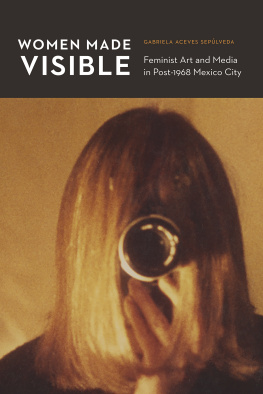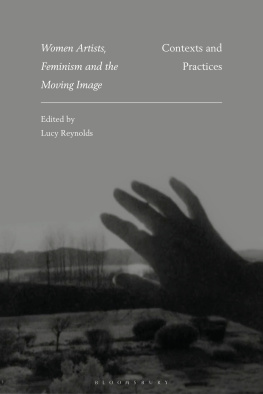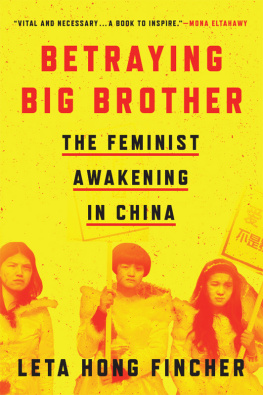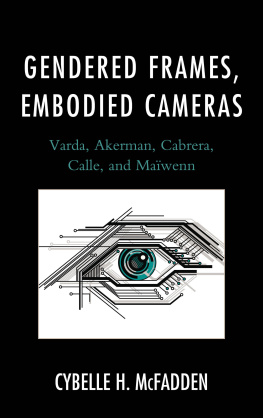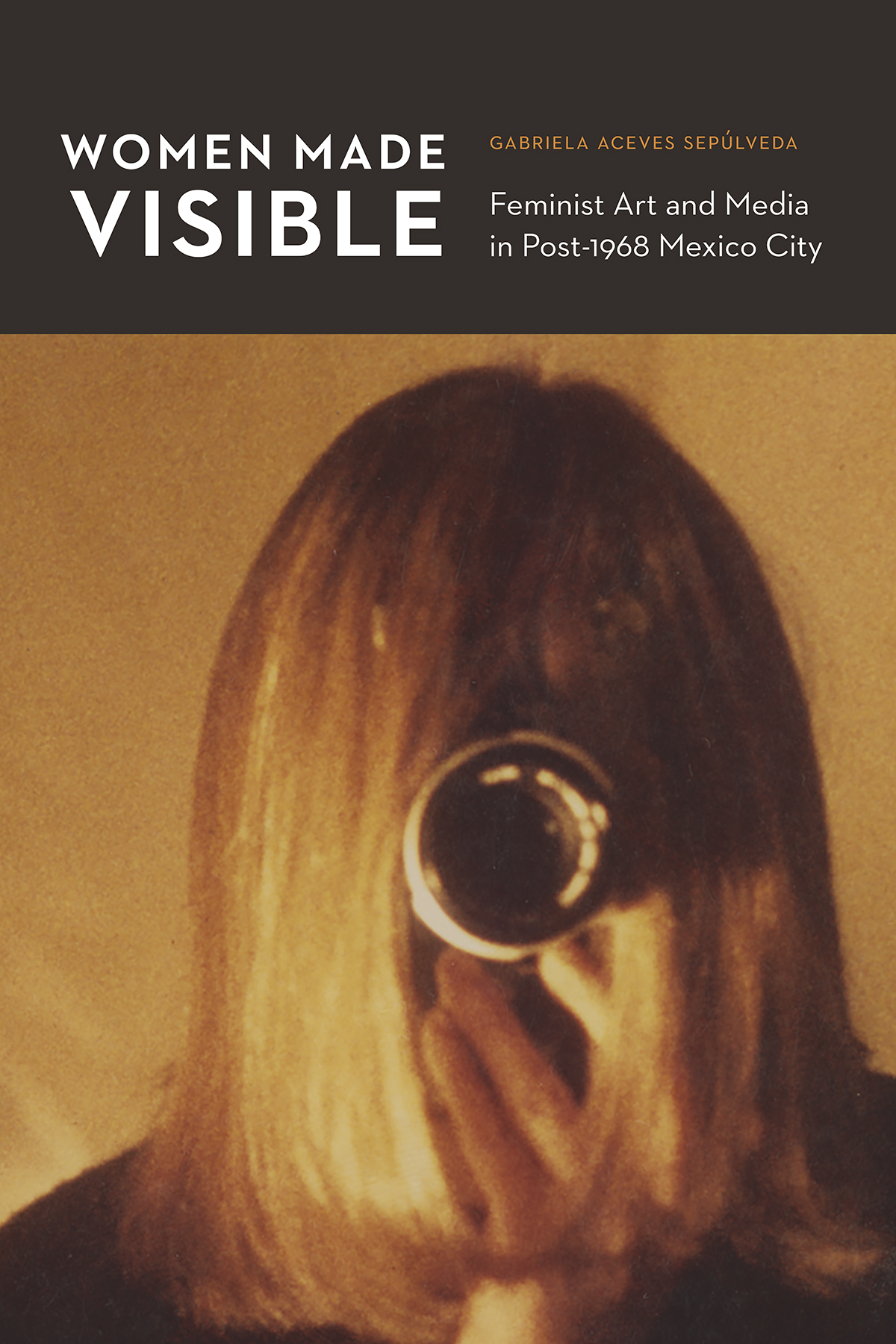
Gabriela Aceves Seplveda brilliantly contrasts two primary sources that are not normally read together: private artist archives (and interviews with the artist-archivists) and state security archives. The authors deeply researchedand theoretically and methodologically sophisticatedstudy will be an extraordinary resource for this subfield of video art and experimental film in Mexico.
George Flaherty, author of Hotel Mexico: Dwelling on the 68 Movement
An impressive foundation. Women Made Visible adds important women artists to the canon of Mexican art history. Written in a brisk, accessible, but still sophisticated prose style, this book will serve novice and specialist alike.
Mary K. Coffey, author of How a Revolutionary Art Became Official Culture: Murals, Museums, and the Mexican State
The Mexican Experience
William H. Beezley, series editor
Women Made Visible
Feminist Art and Media in Post-1968 Mexico City
Gabriela Aceves Seplveda
University of Nebraska Press | Lincoln & London
2019 by the Board of Regents of the University of Nebraska
Acknowledgments for the use of copyrighted material appear in , which constitute an extension of the copyright page.
Cover designed by University of Nebraska Press; cover image: Ciclope by Pola Weiss Fondo Pola Weiss-Edna Torres, Centro de Documentacin 15, Museo Universitario Arte Contemporneo, UNAM .
All rights reserved
Library of Congress Cataloging-in-Publication Data
Names: Aceves Seplveda, Gabriela, 1973 author.
Title: Women made visible: feminist art and media in post-1968 Mexico City / Gabriela Aceves Seplveda.
Description: Lincoln: University of Nebraska Press, 2019. | Series: The Mexican experience | Includes bibliographical references and index.
Identifiers: LCCN 2018023889
ISBN 9781496202031 (cloth: alk. paper)
ISBN 9781496213242 (pbk.: alk. paper)
ISBN 9781496213839 (epub)
ISBN 9781496213846 (mobi)
ISBN 9781496213853 (pdf)
Subjects: LCSH : Feminism and the artsMexicoMexico CityHistory20th century. | Women in art. | Women in mass media. | WomenSocial conditionsMexicoMexico CityHistory20th century. | Mexico City (Mexico)Social conditions20th century.
Classification: LCC NX 180. F 4 A 29 2018 | DDC 701/.03dc23 LC record available at https://lccn.loc.gov/2018023889
The publisher does not have any control over and does not assume any responsibility for author or third-party websites or their content.
For Sofa
Contents
The seeds of this book were planted in Guadalajara, Mexico, in the early 1990s when, as a young aspiring artist, I began to notice the workings of the male-dominated art system and the lack of women artists mentioned in art history books. It took a copious amount of time and many detours, including moving to another country, starting a family, and making several career adjustments, to have the opportunity finally to explore the issue at length.
Throughout the years that led to the completion of this book, I had the privilege of having the intellectual guidance and friendship of truly amazing people who inspired me and without whom this project would not have been possible. In some ways, this project is as much theirs as it is mine. The most necessary expressions of gratitude go to the archivists, curators, artists, and scholars in Mexico City who kindly guided me toward the materials without which this work would not exist. I am deeply grateful to Mnica Mayer, Ana Victoria Jimnez, Rosa Martha Fernndez, Eli Bartra, Magali Lara, Maris Bustamante, Carla Rippey, Sarah Minter, Karen Cordero Reiman, and Cristina Hjar for allowing me to consult their archives and for taking the time to share with me their amazing life experiences and work, which became the inspiration and key sources for this project. Also providing valuable information and intellectual encouragement were Guillermina Guadarrama, Cynthia Pech, Emma Cecilia Garca, Ana Garduo, Alberto Hjar, lvaro Vzquez Mantecn, Araceli Zuiga, Cesar Espinoza, David Arriaga, Felipe Ehrenberg, Edna Torres, Renato Gonzlez Mello, and Victor Muoz. I am grateful to all those who assisted me at the Archivo General de la Nacin, Galera 2 and 3; Biblioteca Central, UNAM; Biblioteca Daniel Coso Villegas, COLMEX; Biblioteca de las Artes, Fondos Documentales; Biblioteca Justino Fernndez, Instituto de Investigaciones Estticas, UNAM; Centro Nacional de Investigacin, Documentacin e Informacin de Artes Plsticas, CENIDIAP ; Filmoteca, UNAM; Fondo de la Secretara de Educacin Pblica del Instituto de Bellas Artes, INBA; Hemeroteca Nacional, UNAM; Museo de Arte Carillo Gil; Museo de Arte Moderno; and Promotora Fernando Gamboa. Many thanks to Pilar Garca de Germenos, curator of collections at ARKEHIA ( MUAC - UNAM ), for providing access to important material and offering institutional support and lots of encouragement. I am also thankful to Ariel Rodrguez Kuri and Guillermo Palacios y Olivares from El Colegio de Mxico for supporting the early stages of research in Mexico City. Outside Mexico, I am grateful to all those at the Special Collections at Stanford University Libraries.
I especially owe an enormous debt to William E. French and Alejandra Bronfman, who continuously provided intellectual guidance, friendship, and encouragement. Bill was always kind and generous in his determination to make me think like a historian and, in particular, enormously patient in his efforts to make me a better writer. Alejandra always found time and encouragement for me. Whether it was to clarify a concept or to discuss my most pressing personal and academic doubts, Alejandra constantly provided intellectual challenges and guidance that have crucially shaped me as a scholar and teacher. Both Bill and Alejandra have been vitally important in every stage of this book and have truly inspired me to be a historian.
Others have been equally generous with their feedback and encouragement. I am particularly grateful to Jessica Stites-Mor from the University of British Colombia, Okanagan, for her trust in and fundamental support for this project. In the Department of History at the University of British Colombia, I am thankful to Robert Brain for being incredibly generous with his intellect and time; to Michel Ducharme for providing enormous amounts of support; and to Carla Nappi for inspiring me to bring excitement and politics to the history classroom and to think about media more broadly. In Guadalajara, Arturo Camacho from El Colegio de Jalisco and Mara Teresa Fernndez-Aceves from CIESAS Occidente were generous with their time and advice.
The list of friends and colleagues with whom I have shared this time and who, whether explicitly or inadvertently, have played a part in this project is very long. I am particularly grateful to Oralia Gomez-Ramrez, Noa Grass, Laura Madokoro, Ruth Mandujano, Alessandra Santos, and Tucker Sharon for their friendship, courage, and intellect. May Chazan and Melissa Baldwin introduced me to aging studies and encouraged me to think about archives and activism from a new perspective. Thanks are also due to Benjamin Bryce, who organized the monthly meetings of the BC Latin American History Group, which helped develop a community of scholars from which my manuscript also benefited greatly. Kathryn White offered great suggestions and the close reading that my manuscript needed. My colleagues at the School of Interactive Arts and Technology at Simon Fraser University provided a stimulating place to work and the much-needed support to finalize this book.
In Mexico, during the early stages of this project, Natalia Armienta Oikawa came to the rescue with her camera and, along with Lucy Maldonado, provided the best childcare services across Mexico (from Mexico City to Guadalajara to Queretaro and back). I am always in debt to Alex for providing a home for all the family in Mexico City. I thank mis compaeras de vida del Instituto de Ciencias de Guadalajara, and Alejandra Gmez for virtually being with me all the time and keeping things real.
Next page
